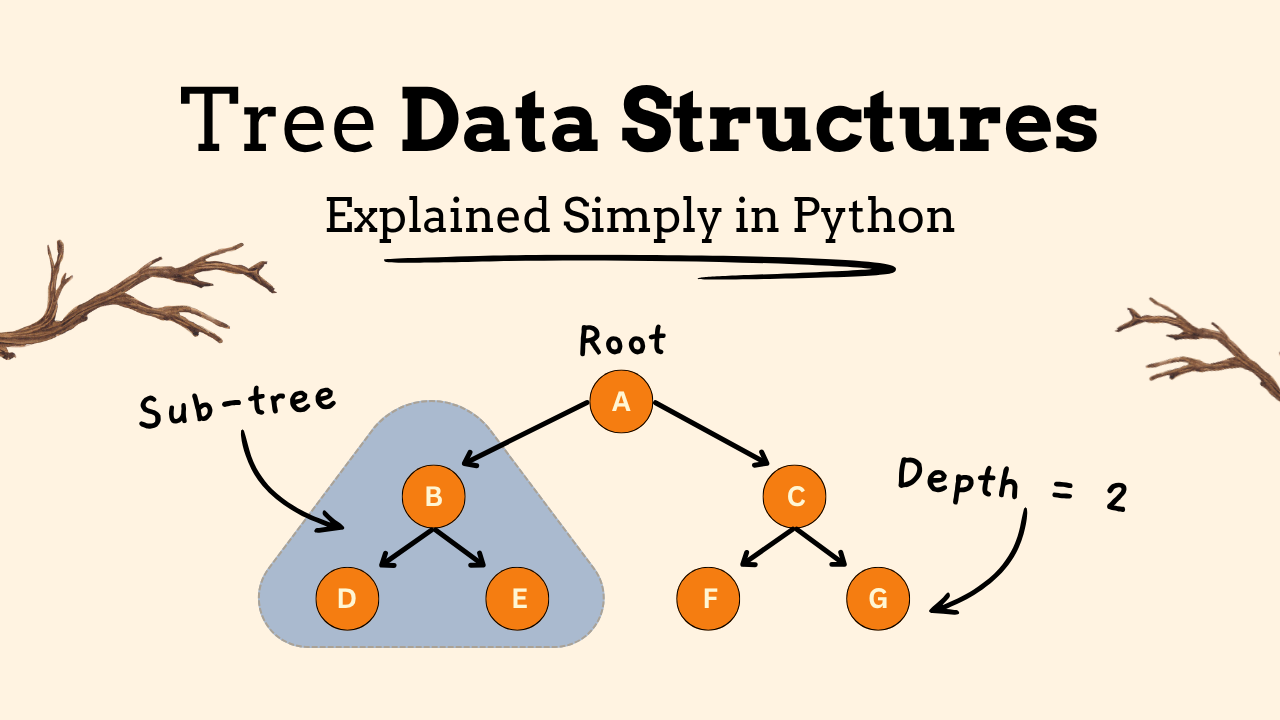Tree Data Structures Explained Simply (With Real Python Examples)
Master tree data structures in Python with real-world examples, simple explanations, and code walkthroughs perfect for beginners and aspiring developers.
When you first start learning about data structures in computer science, you usually begin with things like arrays, lists, and dictionaries. These are simple, straight-line ways to store and work with data.
But in real life, not everything fits into a straight line. Think about your family tree, a company’s structure with bosses and employees, or how folders are organized on your computer.
These are all systems where things branch out from one main starting point. That’s what we call a hierarchy. To work with that kind of setup in programming, we use something called a Tree.
Each week, I dive deep into Python and beyond, breaking it down into bite-sized pieces. While everyone else gets just a taste, my premium readers get the whole feast! Don't miss out on the full experience – join me today!
In this article, I’m going to breakdown what tree structures are, when and why you’d use them, how they work, and how to build one in Python.
I’ll keep things easy by using clear examples, easy-to-follow code, and real-world comparisons. I’ll even walk through building a family tree step by step, so you can see how useful and straightforward it really is.
👉 Premium readers can access the Interactive Videos.
👉 Download my Handcrafted Data Structures Guide.
👉 Gain access to my full article archive.
👉 and Recommend projects at the bottom.
If you haven’t subscribed to my premium content yet, you need to check it out. You unlock exclusive access to all of these articles and all the code that comes with them, so you can follow along!
Plus, you’ll get access to so much more, like monthly Python projects, in-depth weekly articles, the '3 Randoms' series, and my complete archive!
👉 Thank you for allowing me to do work that I find meaningful. This is my full-time job so I hope you will support my work.
If you get value from my work, consider joining premium. It really helps me keep going and lets me know you’re getting something out of my work!
If you’re already a premium reader, thank you from the bottom of my heart! You can leave feedback and recommend topics and projects at the bottom of all my articles.
👉 If you get value from my work, please help me out, leave it a ❤️, and share it with others who would benefit from this. Thank you so much!
What Is a Tree Data Structure?
Basically, it’s a way to organize information that starts at one main point—called the root—and then splits off into different parts. Each piece of data in the tree is called a node.
A node can have a bunch of smaller parts under it, which we call children. The very first node, the one everything else comes from, like I said is the root. And if a node doesn’t have anything under it—no children—it’s called a leaf.
An easy way to picture it is with a family tree. Imagine your grandpa at the top. He has two kids—your dad and your aunt. Then your dad has you, and your aunt has her kids. That’s a tree. Each person is a node, and the way they’re connected shows how the family is laid out.
Keep reading with a 7-day free trial
Subscribe to The Nerd Nook to keep reading this post and get 7 days of free access to the full post archives.



